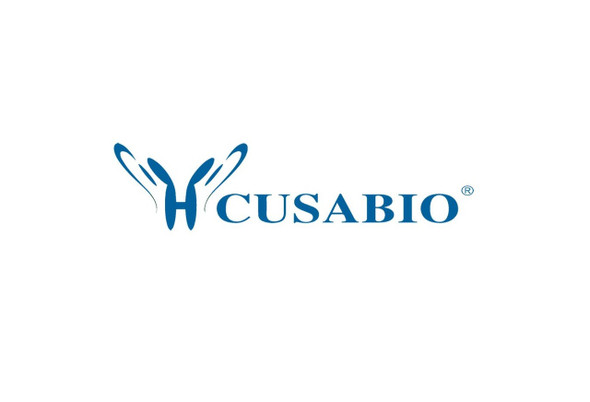Cusabio Human Recombinants
Recombinant Human Methionine synthase reductase (MTRR) | CSB-YP890659HU
- SKU:
- CSB-YP890659HU
- Availability:
- 25 - 35 Working Days
Description
Recombinant Human Methionine synthase reductase (MTRR) | CSB-YP890659HU | Cusabio
Alternative Name(s): MTRR; Methionine synthase reductase; MSR; EC 1.16.1.8
Gene Names: MTRR
Research Areas: Metabolism
Organism: Homo sapiens (Human)
AA Sequence: MGAASVRAGARLVEVALCSFTVTCLEVMRRFLLLYATQQGQAKAIAEEICEQAVVHGFSADLHCISESDKYDLKTETAPLVVVVSTTGTGDPPDTARKFVKEIQNQTLPVDFFAHLRYGLLGLGDSEYTYFCNGGKIIDKRLQELGARHFYDTGHADDCVGLELVVEPWIAGLWPALRKHFRSSRGQEEISGALPVASPASSRTDLVKSELLHIESQVELLRFDDSGRKDSEVLKQNAVNSNQSNVVIEDFESSLTRSVPPLSQASLNIPGLPPEYLQVHLQESLGQEESQVSVTSADPVFQVPISKAVQLTTNDAIKTTLLVELDISNTDFSYQPGDAFSVICPNSDSEVQSLLQRLQLEDKREHCVLLKIKADTKKKGATLPQHIPAGCSLQFIFTWCLEIRAIPKKAFLRALVDYTSDSAEKRRLQELCSKQGAADYSRFVRDACACLLDLLLAFPSCQPPLSLLLEHLPKLQPRPYSCASSSLFHPGKLHFVFNIVEFLSTATTEVLRKGVCTGWLALLVASVLQPNIHASHEDSGKALAPKISISPRTTNSFHLPDDPSIPIIMVGPGTGIAPFIGFLQHREKLQEQHPDGNFGAMWLFFGCRHKDRDYLFRKELRHFLKHGILTHLKVSFSRDAPVGEEEAPAKYVQDNIQLHGQQVARILLQENGHIYVCGDAKNMAKDVHDALVQIISKEVGVEKLEAMKTLATLKEEKRYLQDIWS
Source: Yeast
Tag Info: N-terminal 6xHis-tagged
Expression Region: 1-725aa
Sequence Info: Full Length
MW: 82.4 kDa
Purity: Greater than 90% as determined by SDS-PAGE.
Relevance: Involved in the reductive regeneration of cob(I)alamin (vitamin B12) cofactor required for the maintenance of methionine synthase in a functional state. Necessary for utilization of methylgroups from the folate cycle, thereby affecting transgenerational epigenetic inheritance. Folate pathway donates methyl groups necessary for cellular methylation and affects different pathways such as DNA methylation, possibly explaining the transgenerational epigenetic inheritance effects.
Reference: Molecular cloning, expression and physical mapping of the human methionine synthase reductase gene.Leclerc D., Odievre M.-H., Wu Q., Wilson A., Huizenga J., Rozen R., Scherer S.W., Gravel R.A.Gene 240:75-88(1999)
Storage: The shelf life is related to many factors, storage state, buffer ingredients, storage temperature and the stability of the protein itself. Generally, the shelf life of liquid form is 6 months at -20?/-80?. The shelf life of lyophilized form is 12 months at -20?/-80?.
Notes: Repeated freezing and thawing is not recommended. Store working aliquots at 4? for up to one week.
Function: Involved in the reductive regeneration of cob(I)alamin (vitamin B12) cofactor required for the maintenance of methionine synthase in a functional state. Necessary for utilization of methylgroups from the folate cycle, thereby affecting transgenerational epigenetic inheritance. Folate pathway donates methyl groups necessary for cellular methylation and affects different pathways such as DNA methylation, possibly explaining the transgenerational epigenetic inheritance effects.
Involvement in disease: Homocystinuria-megaloblastic anemia, cblE complementation type (HMAE); Neural tube defects, folate-sensitive (NTDFS)
Subcellular Location: Isoform B: Cytoplasm, SUBCELLULAR LOCATION: Isoform C: Cytoplasm, SUBCELLULAR LOCATION: Isoform A: Cytoplasm
Protein Families:
Tissue Specificity: Found in all tissues tested, particularly abundant in skeletal muscle.
Paythway:
Form: Liquid or Lyophilized powder
Buffer: If the delivery form is liquid, the default storage buffer is Tris/PBS-based buffer, 5%-50% glycerol. If the delivery form is lyophilized powder, the buffer before lyophilization is Tris/PBS-based buffer, 6% Trehalose, pH 8.0.
Reconstitution: We recommend that this vial be briefly centrifuged prior to opening to bring the contents to the bottom. Please reconstitute protein in deionized sterile water to a concentration of 0.1-1.0 mg/mL.We recommend to add 5-50% of glycerol (final concentration) and aliquot for long-term storage at -20?/-80?. Our default final concentration of glycerol is 50%. Customers could use it as reference.
Uniprot ID: Q9UBK8
HGNC Database Link: HGNC
UniGene Database Link: UniGene
KEGG Database Link: KEGG
STRING Database Link: STRING
OMIM Database Link: OMIM









